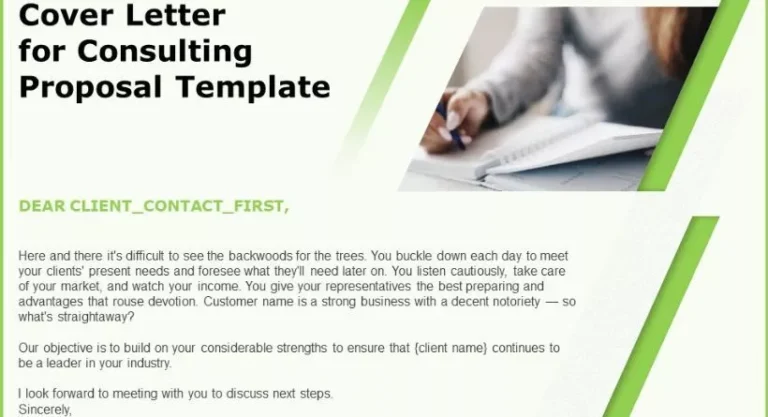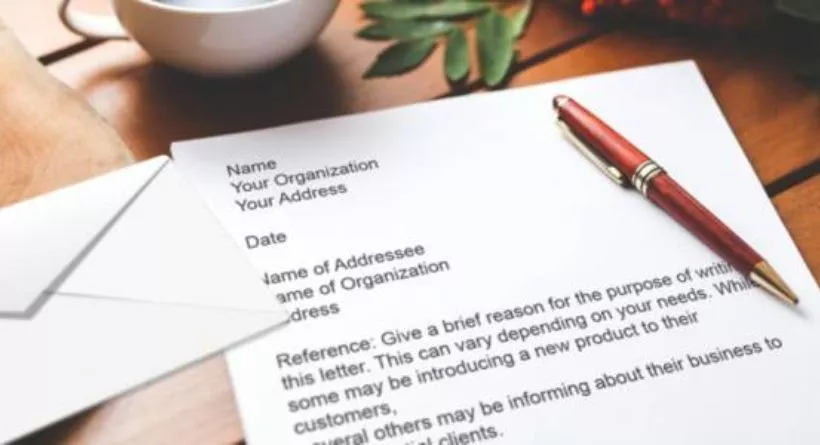Crafting a convincing business proposal is crucial for winning new clients and securing business deals. A business proposal letter is a concise, one-page document that functions as a persuasive cover letter summarizing the key points of your comprehensive proposal. Its purpose is to provide a brief overview of your proposal’s most important aspects. Using a business proposal letter can enhance your professionalism, establish credibility, offer additional context, and provide a short pitch. You can send the letter as an email or physical copy. To create an impressive business proposal, consider hiring a design expert on Fiverr. With prices as low as five dollars, Fiverr offers a gig-based marketplace where professionals provide editable proposal designs that you can personalize for each potential client and send as a PDF. Browse the top gigs below for the best proposal designs.
How Business Proposal Letters Work
Creating an effective proposal letter is essential to successfully pitch your business idea. To ensure maximum impact, keep your proposal letter brief and concise, containing only 3-4 paragraphs and fewer than 400 words, including five key elements. For formal proposal letters, begin with a business heading that includes both your contact information and your prospect’s. Then, briefly introduce your company before explaining the purpose of your proposal, which should include the problem, solution, and key benefits. Close with a powerful call-to-action and a detailed signature.
After drafting your business proposal letter, send it to your potential client along with the full proposal. You may mail a hard copy with the letter on top and the proposal underneath, or more commonly, email it. If your contact is the decision maker, paste the letter into the email’s body and attach the proposal. If your contact may forward your email to others, consider including the letter as the first page of the proposal document. Make your proposal letter a compelling introduction to your proposal and grab your prospect’s attention to seal the deal.
Creating a compelling proposal letter requires customizing it to your potential client, just like your comprehensive business proposal. Ensure that the two documents are consistent in their messaging and complement each other. To learn more about crafting a comprehensive business proposal and how it integrates with your proposal letter, check out our guide on how to write a business proposal.
In certain instances, the terms “business proposal” and “business proposal letter” are used interchangeably, but they refer specifically to a one-page business proposal. For small-scale projects or proposals to companies with whom you have a strong relationship, a one-page proposal that combines both the letter and details may suffice. This approach allows you to provide a concise and effective overview of your proposal while maintaining the professionalism and credibility required to win the project.
Free Business Proposal Letter Template
To make your proposal letter creation process seamless, we’ve designed a free business proposal letter template that includes the essential elements mentioned earlier, along with corresponding examples for each section. Easily personalize it to suit your unique sales scenario by replacing the fields enclosed in parentheses with your own text. Throughout the article, we’ll guide you on how to do this while providing relevant screenshots of each section for a better understanding.
Standard Business Proposal Letter Format
To create an impactful business proposal letter, it’s crucial to understand each of its key components. Check out the major elements of an effective proposal letter below, starting with the business heading and moving on to the introduction, statement of purpose, and call-to-action. Finally, conclude with a powerful outro to leave a lasting impression on your potential client.
Now that you’ve gained an understanding of the significance of each section in the proposal letter, it’s time to get started on crafting your own. Follow our comprehensive step-by-step guide to write a winning business proposal letter.
How to Write a Business Proposal Letter
Crafting a compelling proposal letter that efficiently introduces and outlines your proposal requires drafting each of the five key elements in a strategic order. Utilize our free template to help you with examples of each element. Remember to keep it concise and impactful, including only the essential information, and using simple language to keep the reader engaged. Personalization is key, so ensure the prospect feels heard and understood, which can differentiate you from your competitors and motivate them to work with you.
1. Fill Out Your Business Headings
Make sure to include business headings at the top left-hand side of your letter, with essential information about both your business and your prospect’s. This includes full names, job titles, company names, addresses, and contact information, as illustrated in our examples. These headings not only ensure that your letter is personalized for the recipient, but also help distinguish your business from other vendors they may be considering.
When writing a business proposal letter, it’s standard to include business headings that list important information about your business and your prospect’s. You can also add the date at the top, and some businesses choose to include their logo. The key is to ensure that it looks organized and professional. Combining rows can help save space. While this element is a formality, a sloppy appearance can hurt your proposal’s success rate. If you’re sending the letter in the body of an email, including business headers may not be necessary, and it’s more appropriate to include them if the letter appears as the first page of the proposal.
2. Craft a Compelling Introduction
To make a strong first impression in your proposal letter, it’s important to start with a personalized and engaging introduction. Address your prospect by name and use a warm and friendly greeting to build rapport. Next, highlight the key pain points and challenges that your prospect is facing, and show that you understand their unique situation. Keep the introduction concise and to the point, aiming for 50-100 words. By doing so, you can capture the reader’s attention and set the stage for the rest of your proposal.
To make the introduction section stand out, our template includes bolded fields that guide you on what information to include. These fields include the individual and business names, as well as other key details that can help you make a great first impression. Use the screenshot below to help you personalize your introduction and make it as compelling as possible.
First or Last Name Deciding: whether to address your prospect as Frank or Mr. Underwood largely depends on your existing relationship with them. When in doubt, it’s best to err on the side of formality and use Mr. or Mrs. However, keep in mind that they may prefer other pronouns or honorifics, such as Mx.
Date of Last Conversation: When drafting your business proposal letter, it’s a good idea to include a reference to your previous conversation with the prospect. Mention the date of the conversation and any relevant details to remind them of your interaction and make the proposal more personal. This shows that you’ve been attentive and interested in their needs.
Agreed Value Proposition:Incorporate the value proposition agreed upon in your previous meeting with the prospect into the statement of purpose section of your proposal letter. Make it easy for them to remember by using the same phrasing they used when expressing it. This will help reinforce the unique benefits your solution provides.
Number of Years in the Industry: When writing your business proposal letter, it’s important to establish your expertise and credibility. One effective way to do this is by mentioning how long you’ve been serving customers like the prospect. This simple statement can go a long way in building trust and confidence in your business.
Their Business Type:Specify the business type you serve, such as “boutique fashion retailers,” “digital marketing agencies,” or “real estate investors.” This demonstrates your expertise and helps the prospect relate to your proposal. Mention that you’ve successfully served companies similar to theirs to further build trust.
Eye-Catching Benefit: Capture your prospect’s attention by highlighting another key benefit of your solution before moving on to the statement of purpose. Aim to focus on a benefit that they have expressed interest in during previous conversations. Our free template includes prompts to help you craft this section effectively.
3. Clearly State the Purpose of Your Proposal
Are you ready to draft a winning business proposal letter? The statement of purpose is the key element that can make or break your pitch. At around 175 words, it’s crucial to craft a compelling summary of what your potential client will gain from reading your proposal. Highlighting your unique selling proposition (USP) and key benefits is also essential to capture their interest. In this guide, we’ll walk you through how to complete the statement of purpose section of your business proposal letter, so you can showcase how your solution can help your client solve a problem or achieve their goal. Get ready to impress your prospects with a well-crafted statement of purpose!
Prospect’s Main Problem:
Captivate your audience by highlighting their pain points and offering a solution. By addressing their specific needs, you can easily grab their attention and increase engagement. Additionally, be transparent about the costs associated with the problem to set realistic expectations. Incorporate these details in 1-2 sentences to provide clarity and build trust with your audience. With this approach, you can optimize your content for SEO and improve your chances of ranking higher in search results.
Your Product or Service: Introduce your solution by clearly and concisely describing what it is and how it addresses the problem. Craft a powerful one-sentence statement that highlights the key benefits of your solution and how it works. This approach not only helps to capture the reader’s attention but also improves the chances of your content ranking higher in search results. By providing a clear and concise solution, you can effectively engage your audience and establish yourself as an authority in your industry.
Benefits List: Build excitement around your proposal by outlining three key benefits that your solution offers. By highlighting the specific advantages of your offering, you can pique the reader’s interest and encourage them to take action. To make your solution stand out from the competition, use the third benefit as a unique selling proposition that sets you apart. This approach not only entices your audience but also optimizes your content for SEO and improves your chances of ranking higher in search results. By showcasing your expertise and value, you can establish a strong competitive edge and drive conversions.
Any Other Crucial Proposal Elements You Want to Mention: In addition to the three key benefits, your proposal may include other valuable components that can provide further insights and support. Use commas to list these elements, such as case studies, detailed analysis, or other relevant information. By showcasing the full scope of your proposal, you can demonstrate the breadth and depth of your expertise and increase the perceived value of your offering. To help you effectively organize and present this information, we have included a free template that uses paragraphs and bullets. By optimizing your content in this way, you can enhance your SEO strategy and improve your chances of ranking higher in search results.
Although you might be tempted to include pricing information in your letter, it’s generally recommended to exclude it. By waiting to present pricing until the end of the full proposal, you give the prospect time to fully understand and appreciate the value of your offering. This approach can make the cost more digestible and increase the likelihood of conversion. However, if your pricing is a key selling point (such as being significantly lower than the competition), you may want to include it in the paragraph following the bulleted list. By following this best practice, you can optimize your content for SEO and improve your chances of ranking higher in search results.
4. Make Your Call-to-Action
Your call-to-action (CTA) is a critical element of your proposal letter that directs the prospect towards the next step. Typically, the CTA prompts the recipient to open and review the attached business proposal. However, you can also encourage them to contact you with any questions, set up a meeting to discuss the proposal further, or even sign a contract if they have no concerns. To effectively guide the prospect towards conversion, consider using one of these four potential CTAs. By crafting a compelling and actionable CTA, you can optimize your content for SEO and improve your chances of ranking higher in search results, while also increasing the likelihood of securing a new business opportunity.
- Attached to this email, you’ll find the business proposal for your review. We encourage you to read through it carefully and reach out to us with any questions or concerns you may have. To schedule a meeting to discuss the proposal in greater detail, please feel free to book a time using our Calendly link. We look forward to hearing from you soon.”
- “Thank you for considering our proposal. We have attached the detailed proposal for your review, and we would appreciate it if you could take the time to read through it. If you have any questions or need further clarification, please don’t hesitate to contact us. To discuss the proposal further, let’s set up a call at your earliest convenience. Please let us know your availability next week, and we’ll schedule a meeting accordingly.”
- “We’re excited to share the enclosed proposal with you and hope that you find all the information you need to make an informed decision. To ensure that we address any questions or concerns you may have, let’s schedule a call to discuss the proposal in greater detail. Please let us know your availability for the next week, and we’ll provide you with three date and time options that work best for us.”
- “Thank you for considering our proposal. Please find the attached proposal that includes all the details we discussed. If you have any questions or require further information, please let us know. If everything looks good, you can sign the contract on the final page. We look forward to the possibility of working with you soon.
Encouraging the recipient to read the proposal and providing clear next steps is a powerful tactic that helps solidify the sales process. We recommend choosing a CTA that tactfully encourages the prospect to commit to a follow-up meeting where you can discuss the proposal and take the next steps towards closing the sale. This approach can help accelerate the sales cycle velocity and lead to better results.
However, if you prefer a softer approach, you can use the CTA included in our template. This CTA invites the prospect to get in touch with you if they have any questions or need additional information. We believe that either approach can be effective depending on your style and the needs of your prospect.
5. End With a Friendly Outro & Signature
Crafting an effective outro is crucial to leave a positive and lasting impression on the recipient. Your outro should express confidence in your proposal and thank the prospect for considering you as a potential partner, supplier, or vendor. This will help to end the letter on a friendly and positive note, and reinforce the benefits of reading the proposal.
When concluding the letter, use the sign-off “sincerely” followed by your full name or email signature. This will help to maintain a professional tone and provide your recipient with your contact details for future communication.
Adding a handwritten signature is a simple yet effective way to add a personal touch to your proposal letter. If you don’t have an e-signature, you can easily create one by signing a piece of paper, taking a photo, and pasting that image into your proposal letter document, whether it’s in Word, Google Docs, or PDF format.
In addition to the proposal letter template we’ve provided, it’s also beneficial to review and learn from real-world examples of successful proposal letters. This can provide inspiration and help you craft a letter that stands out from the competition.
Top 4 Business Proposal Letter Examples & Samples
Explore these four business proposal letter samples curated from the web by swiping left and right below. Each example offers valuable insights into different techniques, formats, and phrasing that you can adapt for your own proposal letter. By studying and learning from other businesses’ proposals, you can improve your own writing and increase your chances of success.
Starting with a business proposal template and customizing it based on your specific needs and incorporating ideas from online examples can save time and effort. After modifying the template, it can be easily adapted for each individual prospect to create a unique and effective proposal.
Benefits of a Business Proposal Letter
Although not mandatory, writing a business proposal letter can offer several advantages, making it a worthwhile consideration. Sales professionals often compose these letters for a variety of reasons, including:
Overall, use proposal letters on a case by case basis, rather than trying a one size fits all solution.
Bottom Line: Business Proposal Letter
Your business proposal letter serves as a powerful lead nurturing tool and creates the first impression of your proposal. It sets the tone for the rest of the document and builds excitement for the prospect to read how you can help them achieve their goals. To achieve this, the focus of the letter must primarily be on the prospect. While your business accomplishments and accolades are important, they should take a backseat in this introductory document. Use this one-page letter to showcase your understanding of the prospect’s needs and demonstrate how you can assist them to encourage them to continue reading.









